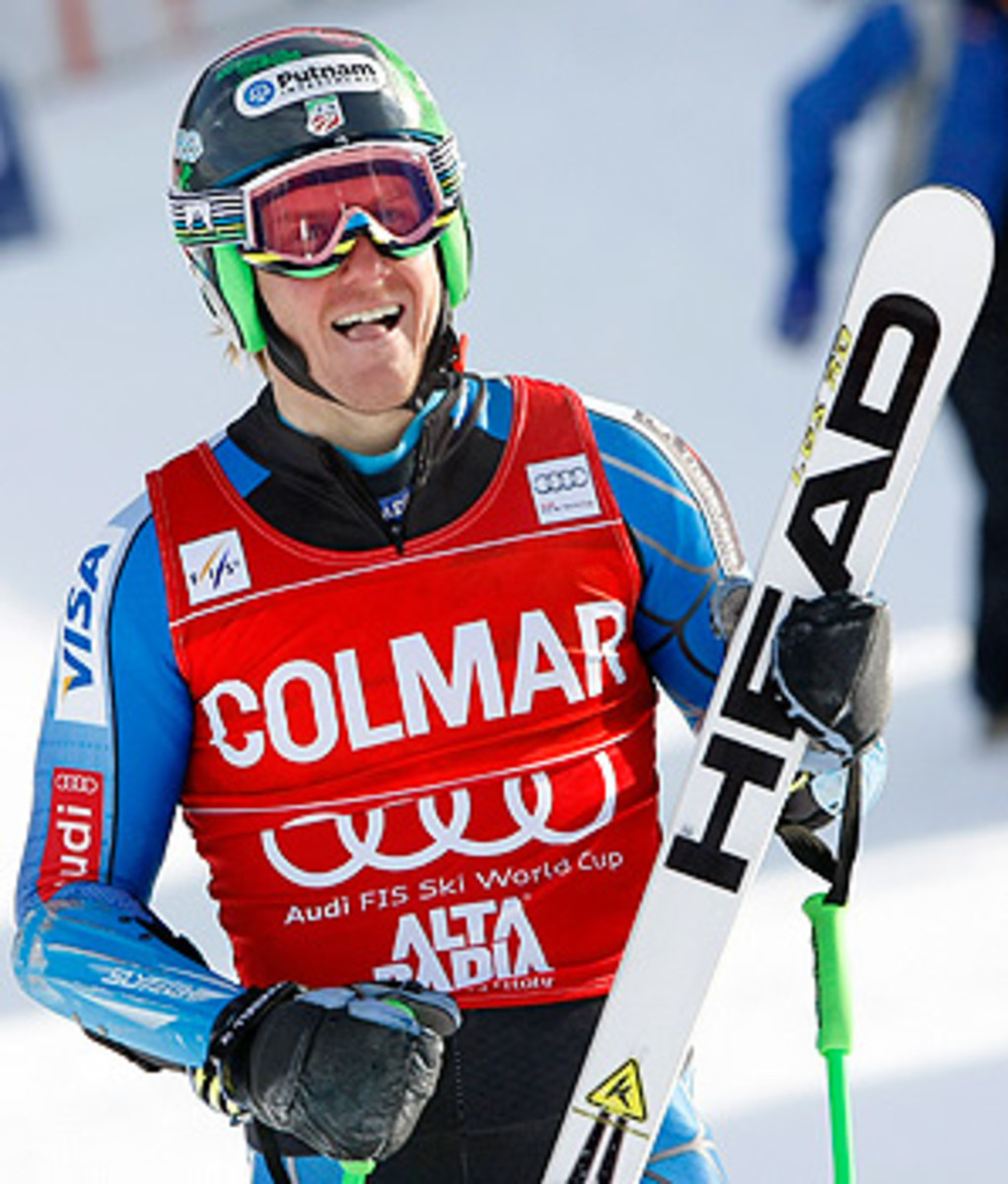Ted Ligety's rivals questioning the legality of his skis


MADONNA DI CAMPIGLIO, Italy (AP) -- Ted Ligety is ruling the giant slalom like few others, and the praise extraordinary: "phenomenon," "superhero" and "unreal."
His performance also has left some rivals questioning whether his equipment conforms to new rules introduced by the International Ski Federation for this season that limit the hourglass shape of skis. But the federation says no equipment rules have been breached.
"It would be nice if people would be more observant of all the preparation Ted has done, and all the training he did with the new equipment," U.S. technical coach Mike Day said. "That's why he's dominating."
It's been mainly Italian skiers raising questions, after they couldn't keep up with Ligety at home in Sunday's race in Alta Badia, when Ligety won the first run by a massive 2.40 seconds.
Ligety won by 2.04 seconds, with defending overall World Cup winner Marcel Hirscher of Austria the runner-up.
Ligety also won the first two GS races this season by large margins, finishing 2.75 ahead in Soelden, Austria, and 1.76 in front in Beaver Creek, Colo. Swedish legend Ingemar Stenmark set the record for margin of victory at 4.06 in 1978-79.
Still, Ligety became the first man since Stenmark in 1978-79 to win two giant slaloms in the same season with an advantage of more than two seconds.
In an article in the Italian newspaper Corriere della Sera on Monday - headlined "Ligety even more giant, amid talent and the usual suspects" - skiers Manfred Moelgg and Davide Simoncelli wondered about the American's skis.
"It seems to me the tails are wider," Moelgg said.
Simoncelli said: "It does raise some doubts."
A similar article appeared in Gazzetta dello Sport.
Federation equipment controller Mike Kertesz measures racers' skis, boots and suits with random checks in the finish area at all men's events.
"I know it was an amazing run," Kertesz told The Associated Press on Monday. "From everyone's perspective, it was like, `What did that guy do?' But I measured his skis in both runs and I measured his race suit for permeability since he was in the top three, and he was within the FIS equipment rules."
Kertesz performs at least four different measurements: radius of ski, minimum width of ski, maximum width at the tip, and binding height.
So far only two men have been disqualified this season.
Austrian veteran Mario Matt lost a top-10 finish in a slalom in Levi, Finland, because his binding height was a tenth of a millimeter too high, and Luca De Aliprandini of Italy lost his first World Cup points during a super-G in Beaver Creek because his skis were too wide.
Surprisingly, there have been no equipment breaches in giant slalom, which was the discipline hardest hit by the new sidecut rules, which went from a 28- to 35-meter radius.
"All of the guys are very close," Kertesz said. "They're all within one meter of the 35-meter limit."
Ligety was the biggest critic of the new rules, but he was also one of the first skiers to start testing the new skis, even using them in a couple races at the end of last season.
"He worked harder on the new equipment," said another Italian skier, Massimiliano Blardone, who won the GS last year in Alta Badia for his third victory on the Gran Risa, moving him within one of Alberto Tomba's record. "He's ahead of us, there's no ifs ands or buts about it. ... Ted invested his time in this, plus he's a phenomenon."
Italy technical coach Jacques Theolier wasn't aware of the doubts raised by his skiers when approached by the AP.
"Ligety's skiing is just tremendous. There isn't anything else to say," Theolier said. "There are other athletes using the same Head setup as he is, and he's way ahead of them, too."
Like Ligety, overall World Cup leader Aksel Lund Svindal and Norwegian teammate Kjetil Jansrud also use Head skis, as does Marcel Mathis of Austria.
For technical races, Ligety shares his ski technician, Alex Martin, with teammate Bode Miller. However, Miller is recuperating from left knee surgery and has not begun his season yet.
"We see it every day in training," Day said, referring to Ligety's performance. "After that first run yesterday I said to him, `Look at that time, but it wasn't anything special, was it?' And he agreed it wasn't anything special."
On the slope, Ligety seems to crouch and lean to one side at a bigger angle on each turn than anyone else, often touching the snow in four places at once, with his hands, hips, thighs and buttocks. He doesn't seem to slam into gates as other racers do.
"At the end of every turn, he always accelerates," Simoncelli said. "We're studying his posture, too. Maybe that's where the secret is."
